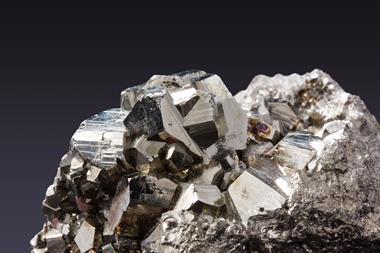Germany’s nuclear waste management fund KENFO has plans to invest between 2.5% and 4% in illiquid assets this year – based on its investment strategy, the fund will hold up to approximately 30% of its total assets in alternatives in the medium term.
The fund conducted a review of its strategic asset allocation last year, targeting over the long-term, on average, total returns on investments of 4.3%, driven also by investment in illiquid asset classes that it will continue to build over the next five years, the fund announced in its financial statement for 2022.
It took tactical measures to cushion losses in 2022 that stood at the end of the year at -12.2%, as reported. Assets under management fell to €21.68bn, as of December last year, compared with €22.03bn in the prior year.
Tactical measures included an underweight for most of the year in some asset classes such as equities, REITs and high-yield bonds, holding instead cash, and reducing the duration of its bond portfolio temporarily.
With a generally US overweight asset allocation, Kenfo’s equity portfolio consists of a 34.5% allocation to the US, and 15.1% to tech stocks, followed by Japanese equities (8.7%), and UK equities (7.2%), according to the statement.
In its corporate bond portfolio, 40.3% of investments are in the US, while 9.8% are in the UK, and 8.7% in the Netherlands – these being the top three invested countries. KENFO also invests in the banking sector (9.8%), in the health care sector (8.8%), and in real estate (7.2%).
Its latest report showed that 46.6% of its real estate portfolio invests in US REITs, 13.9% in UK REITs, and 6.2% in German REITS. Investments in US treasuries rank top of bond allocations at 13.5%.
The fund invests 41.2% of its total assets, or €20.51bn) in equities, 31% in corporate bonds, 15.7% in government bonds, 6.5% in illiquid assets, and 5.6% in REITs, the statement disclosed.
Within alternatives, private equity makes up 47.5% of assets invested, 38% is allocated to infrastructure and 14.4% to private debt. It continues to expand its illiquids portfolio, having recorded capital calls of close to €685m and capital returns of approximately €104m in 2022.
In February last year, as the war in Ukraine started, KENFO sold parts of its assets with a book value of €1.03bn to reduce risks, channelling proceeds from the divestments into cash holdings.
In an effort to optimise its portfolio, the fund has mandated asset management companies for management of emerging market bonds and global equities, it said.
Long-term objectives
In order to achieve its objective of securing the financing of nuclear waste disposal from the foundation’s assets until the end of this century, KENFO pursues a long-term investment strategy, a spokesperson told IPE.
“The success of such a strategy does not depend on the short-term performance of a year, but on the long-term performance of the portfolio over the long-term – eight decades for KENFO,” the spokesperson said.
When asked about the fund’s overweight position to the US, KENFO’s spokesperson said that all portfolio weightings shown in the annual report are usually close to regional weightings as defined by KENFO’s strategic asset allocation.
“Generally, when compared to the most widely used market cap-weighted indices, our strategic target allocation tends to be underweight US markets, as we aim to take a more globally diversified approach closer to relative GDP weightings,” the spokesperson noted.
“As an example, our strategic developed market equity portfolio has a target weighting of 40% in North American equities, compared to approximately 64% for the MSCI World ACWI IMI Index. We use a similar approach for asset classes such as REITs or corporate bonds,” the spokesperson continued.
As part of its membership in the Net-Zero Asset Owner Alliance (NZAOA), KENFO has committed to reducing the carbon intensity of its equity and corporate bond portfolios by 20% by the end of 2024, compared with the end of 2019, to reach net zero by 2050.
The CO2 emission intensity of KENFO’s equities and bonds portfolios was reduced by a further 6% in 2022, on a path to reaching its carbon intensity reduction target by the end of 2024.
The latest digital edition of IPE’s magazine is now available





























No comments yet